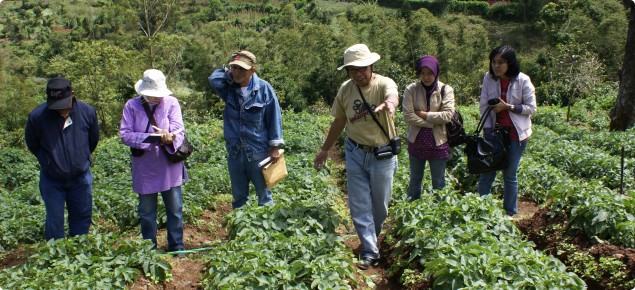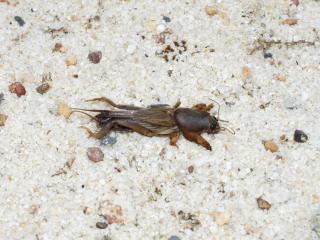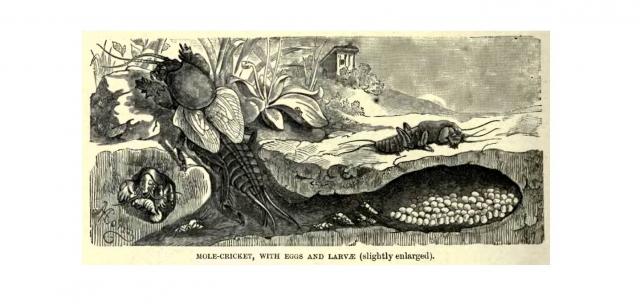Identification
The mole cricket’s Indonesian name is 'anjing tanah' and it belongs to the insect family Gryllotalpidae.
Mole crickets are soil-dwelling insects which become pests of potatoes when they feed on tubers. They may also feed on the base of potato stems and kill them.
Adults can be up to 5cm long and they have a soft body but hard head which helps when digging through soil. Their front legs are specially adapted for digging. Their hind legs are similar to those of other crickets, but are more adapted for digging than jumping.
Mole crickets are strong fliers but are rarely seen because they live in soil and are active at night. Adults produce a chirping sound which attracts other mole crickets.
Adults lay eggs underground. These hatch to immature nymphs which have similar features to adults but lack wings. Development of nymphs to adult mole crickets takes place underground in connected tunnels.
Management
Mole crickets are native insects and have few natural enemies. They are more likley to be present in or near areas of vegetation that have been undisturbed for some time. Early preparation of land for growing vegetable crops should help to reduce their numbers at least as pests that may affect the establishment of crops.
In areas with a history of mole cricket damage, their presence and risk of damage can be detected with an attractant bait. The bait consists of cereal bran or cracked grain such as wheat - mixed 120mL of vegetable oil with 2.5kg of bran or cracked grain.
Place mounds of bait around and within the crop. Mark the locations of the mounds and check these at night for cricket presence. If crickets are easily found, they may be the cause of damage to stems during crop establishment. As crops mature, use of the bait will help to see whether damage to tubers by mole crickets is likely.
If tuber damage is found, harvest the crop as soon as practical. If required, contact and sytemic insectcides registered for use in crops may help control these insects.
Acknowledgment
Funding for this work to support Indonesian potato farmers and WA seed potato exports was provided by the Australian Centre for International Agricultural Research (ACIAR) and the Department of Primary Industries and Regional Development, Western Australia.




